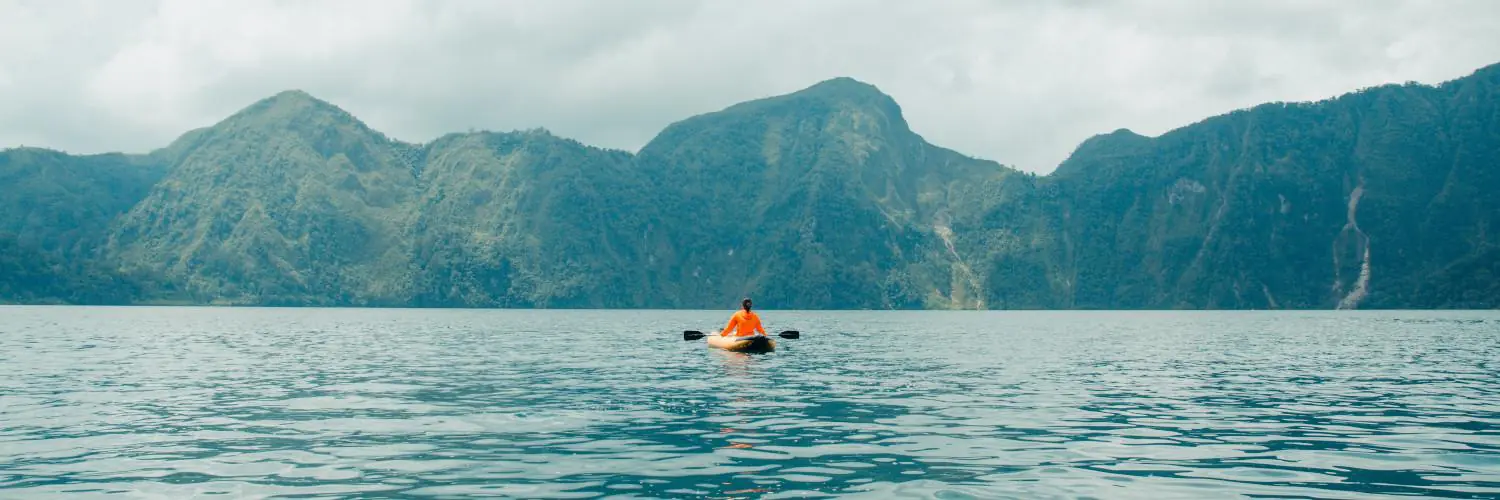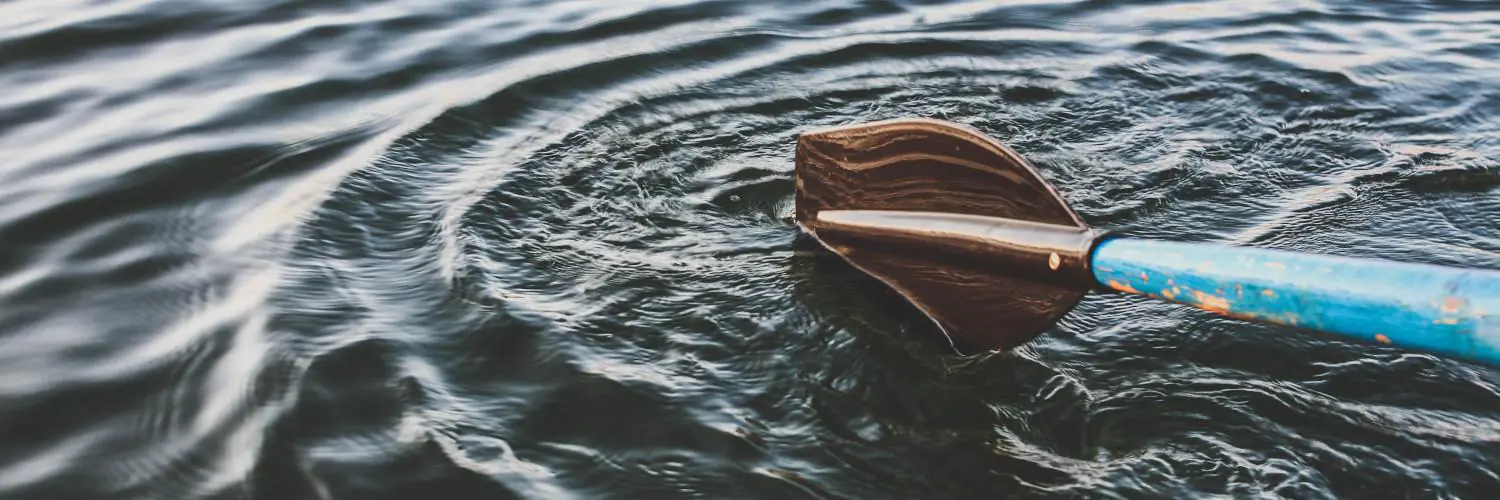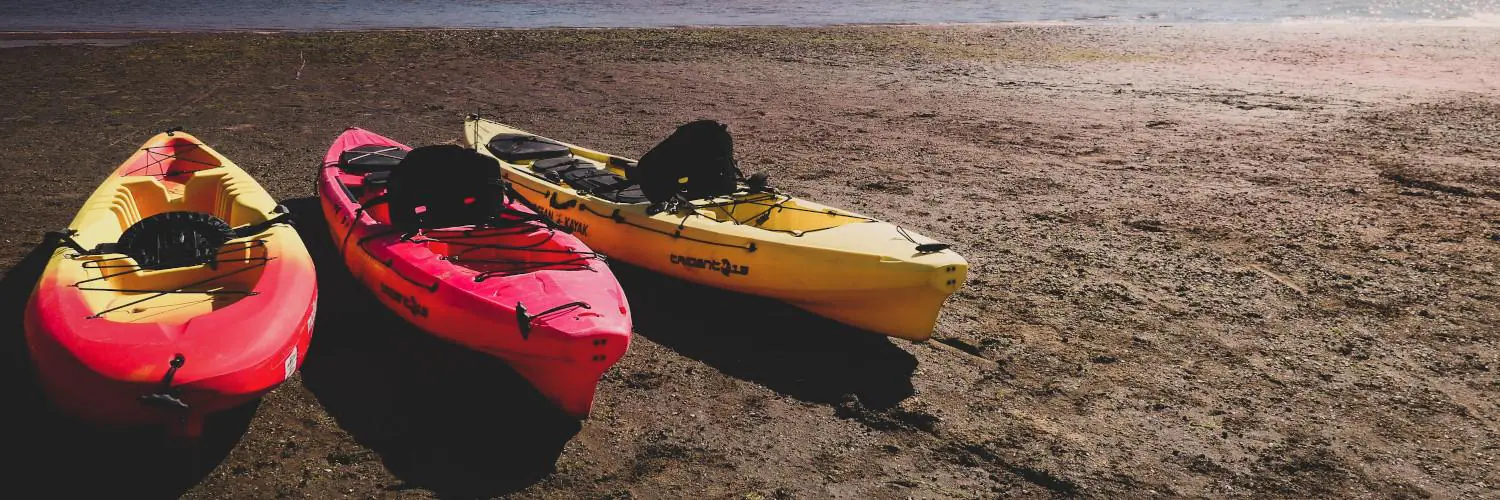Kayaking is a fun water sport that lets people enjoy nature and get exercise. To have a good time on the water, kayakers need the right gear and clothes.
The basic items needed for kayaking are a kayak, paddle, life jacket, and clothes that fit the weather. These things help keep kayakers safe and comfy. Clothes for kayaking are like clothes for other outdoor sports. They should be tough, easy to move in, and good for different types of weather.
In warm weather, kayakers can wear swimsuits, quick-dry shirts, and shorts. For cold weather or water, they need special layers to stay warm. A hat and sunscreen are also smart choices to protect from the sun. With the right gear, people can have fun kayaking in many places and seasons.
Table of Contents
Essential Kayaking Gear
Kayaking requires specific equipment to ensure safety and enjoyment on the water. The right gear can make a big difference in your paddling experience.
Kayaks and Paddles
Kayaks come in different styles for various water conditions. Recreational kayaks work well for calm lakes and slow rivers. Sea kayaks suit open water and longer trips. Whitewater kayaks are designed for rapids.
Paddles are crucial for steering and propulsion. Choose a paddle length based on your height and kayak width. Lightweight materials like carbon fiber reduce fatigue on long trips. Feathered blades can improve efficiency.
Look for kayaks with comfortable seats and adequate storage space. Adjustable foot pegs help with proper positioning. Some kayaks have rudders or skegs for better tracking in windy conditions.
Personal Flotation Devices
Personal flotation devices (PFDs) or life jackets are a must-have for kayaking safety. They provide buoyancy if you capsize. Choose a PFD designed specifically for paddling.
Look for a snug fit that doesn’t ride up when you raise your arms. Bright colors increase visibility on the water. Pockets can store small items like whistles or snacks.
Type III PFDs are common for kayaking. They allow good arm movement for paddling. Some inflatable PFDs are also suitable for kayaking in calm conditions.
Safety Equipment
A whistle is essential for signaling in emergencies. Attach it to your PFD for easy access. A pump helps remove water from your kayak if it enters the cockpit.
Spray skirts keep water out of sit-inside kayaks. They fit around your waist and the cockpit rim. Choose a skirt material suited to your paddling conditions.
Helmets are important for whitewater kayaking or paddling near rocky shores. They protect your head from impacts. Look for helmets designed for water sports with good drainage.
A first aid kit is wise to have on board. Pack it in a waterproof container. Include items for treating cuts, sprains, and other common injuries.
Kayaking Clothing
Proper clothing is essential for a safe and enjoyable kayaking experience. The right gear protects you from the elements and helps regulate your body temperature on the water.
Dressing for the Water Temperature
Water temperature is the most important factor when choosing kayaking clothes. For cold water, wetsuits or drysuits are key. Wetsuits trap a thin layer of water against your skin, which your body warms. Drysuits keep you completely dry and allow for warm layers underneath.
In warmer conditions, quick-drying synthetic materials work well. Rashguards provide sun protection and prevent chafing. Neoprene footwear keeps feet warm and protects against rocks.
Always dress for immersion. Even if the air is warm, cold water can be dangerous. Layering with wicking base layers, insulating mid-layers, and protective outer layers allows adjustments as needed.
Protective Outerwear Options
Kayaking jackets and pants shield you from wind, spray, and rain. Look for waterproof, breathable fabrics with sealed seams. Splash jackets work for mild conditions, while drytops offer more protection.
Neoprene gloves and boots keep extremities warm in cold water. A hat protects from sun and keeps you warm. Sunglasses with a strap guard against glare.
For cool weather, fleece jackets make good insulating mid-layers. Wool or synthetic materials retain warmth when wet. Avoid cotton, which loses insulating properties when damp.
Remember to pack extra layers in a dry bag. Weather can change quickly on the water.
Accessories for Comfort and Convenience
The right accessories can make kayaking more enjoyable and safe. These items protect you from the elements and help you navigate waterways.
Sun and Weather Protection
A wide-brimmed hat shields your face and neck from the sun. Look for one with a chin strap to keep it secure in windy conditions.
Sunglasses with polarized lenses reduce glare off the water. Choose a pair that floats in case they fall off.
Apply waterproof sunscreen to exposed skin. Reapply every couple hours, especially after swimming.
A dry bag keeps clothes, food, and electronics protected from water. Get different sizes for various items.
Paddling gloves prevent blisters and keep hands warm in cool weather. Neoprene gloves work well for cold conditions.
Pogies are mittens that attach to your paddle. They allow a bare-handed grip while shielding from wind and water.
Navigational Aids
A waterproof map and compass help you stay on course. Learn basic navigation skills before heading out.
A GPS device provides precise location info. Choose a waterproof model designed for outdoor use.
A waterproof watch with tide information is useful for coastal kayaking. Some also track speed and distance.
A waterproof headlamp allows for night paddling or setting up camp after dark. Look for one with multiple brightness settings.
Deck-mounted compass makes it easy to check direction while paddling. Install it where you can see it easily.
Packing Essentials for Longer Trips
Longer kayaking trips need extra gear to stay safe and comfy. Pack smart to make your adventure fun and easy.
Hydration and Nutrition
Bring lots of water in big bottles or a hydration pack. Pack more than you think you’ll need. Dry bags keep food and drinks safe from water.
Bring high-energy snacks like nuts, dried fruit, and energy bars. Pack enough food for each day plus extra in case of delays.
For multi-day trips, bring a water filter or purification tablets. This lets you refill from rivers or lakes.
Plan meals that are easy to cook and don’t spoil. Freeze-dried meals are light and simple to make.
Camping Gear
A good tent is key for overnight trips. Pick one that’s light and easy to set up.
Bring a sleeping bag rated for the temps you’ll face. A sleeping pad adds comfort and insulation.
Pack a tarp for extra shelter from sun or rain. It can cover your gear or make a cooking area.
Bring a small camp stove and fuel. Don’t forget matches in a waterproof case.
NRS makes great dry bags to keep your gear dry. Use different sizes for clothes, food, and gear.
Water shoes protect your feet on shore and in the kayak. They dry fast and give good grip.
If you plan to fish, bring a collapsible rod and basic tackle. Check local rules first.
Understanding Kayaking Safety
Kayaking safety starts with proper equipment and clothing. A life jacket or personal flotation device (PFD) is essential. Always wear a properly fitted PFD when on the water.
Dress for the water temperature, not the air temperature. Cold water can lead to hypothermia quickly. Wear layers that can keep you warm even if wet.
For warm weather, swimwear or quick-drying clothes work well. In cooler conditions, consider a wetsuit or drysuit for better insulation.
A spray skirt helps keep water out of the kayak in choppy conditions. It attaches around your waist and the cockpit rim.
Outerwear like a waterproof jacket can protect against wind and rain. Choose breathable fabrics to stay comfortable.
Other important safety items include:
- Whistle or sound-making device
- First aid kit
- Extra paddle
- Bilge pump or bailer
- Navigation tools (map, compass)
Check weather and water conditions before heading out. Avoid kayaking alone, especially as a beginner. Let someone know your plans and expected return time.
Practice self-rescue techniques in calm, shallow water. Knowing how to get back in your kayak is crucial for safety on the water.








